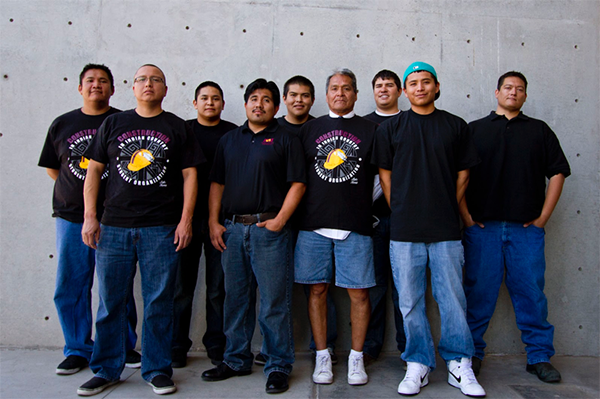Creating Value Through Diversity: Underrepresented Students
Creating Value Through Diversity: Underrepresented Students

"The entrepreneurial mindset is an opportunity for the Ira A. Fulton Schools of Engineering, and the University as a whole, to expand and enrich its approach to diversity."
- Jade Silva, former Associate Director, Student and Cultural Engagement
Case at a glance
Integration goals
Integrate EM into programs affecting students from underrepresented minority groups and ensure that as many students from underrepresented groups learn about EM
Materials affected
Website, promotional materials, stakeholder messaging
Lessons learned
The 3Cs can be advanced through increased diversity among engineering students, because students from underrepresented backgrounds bring new perspectives, which can lead to greater curiosity, unexpected connections, and much-needed value.
Context
Underrepresented minorities (URM) is a government category that does not include women; however, the Ira A. Fulton Schools of Engineering (FSE) includes women in its diversity efforts. In addition to women, it primarily focuses on domestic undergraduate students from the following underrepresented ethnic minority groups: Latinx, African American, and Native American. Diversity efforts are funded through ASU’s Student Programs fee, and graduate students are now also paying this fee. This integration effort is closely aligned with FSE’s Student Organizations; Engineering Projects in Community Services (EPICS) program, which bring engineering into local high schools; and Engineering Futures program, which seeks to increase the retention of female and first-generation students in engineering majors.
ASU’s charter highlights the importance of diversity at ASU. Adopted in 2014, the charter is the blueprint of ASU’s transformation into the New American University, a research institution committed to excellence, access, and impact:
- ASU is a comprehensive public research university, measured not by whom it excludes, but by whom it includes and how they succeed; advancing research and discovery of public value; and assuming fundamental responsibility for the economic, social, cultural and overall health of the communities it serves.
- ASU promotes equal opportunity through affirmative action in employment and educational programs and activities. Discrimination is prohibited on the basis of race, color, religion, national origin, citizenship, sex, sexual orientation, gender identity, age, disability and qualified veteran status.
- ASU's Office of Equity and Inclusion in the University’s Business and Finance unit, supports and fosters a culture of inclusiveness. It promotes and assists with equal opportunity and diversity initiatives. While this office provides university leadership and hiring officials with clear and accessible employment data, timely and effective consultation, high-impact training, and rigorous review of employment-related policies and procedures, it also serves as the centralized resource for supporting student diversity at ASU.
- ASU’s substantial centralized emphasis on diversity affected this effort to integrate entrepreneurial mindset (EM) into URM programming and so too increase URM students’ awareness of KEEN and EM/3Cs.
FSE had an associate director of student and cultural engagement at the start of the EM integration initiative, and that person was responsible for the integration effort in this area, as, in her role, she
- provided diversity training to team leads for communication assistants, tutors, and Fulton ambassadors, all of which help with recruiting students from underrepresented groups, as well as other student representatives such as peer mentors
- developed and delivered training for diversity-oriented student organizations as well as provided funding to these groups, whose own efforts focused on experiential learning
- provided financial and other support for programming such as Heritage Month, a fall banquet, and other diversity, inclusion, and leadership events
- supported industry partnerships through FSE’s career center, which sponsors guest speakers and similar special events
The associate director eventually moved into a role in the centralized office of diversity and inclusion. Instead of filling the open role, FSE chose to distribute diversity responsibilities across the six schools, putting each in direct contact with the centralized office. A significant amount of EM for underrepresented groups is now concentrated in the Engineering Futures program.
Integration details
This integration effort has few details given that structural changes led to its early conclusion. In essence, it started in spring of 2017 and ended during the summer that same year: Academic Student Affairs (ASA) staff were introduced to FSE’s EM integration initiative and trained in the basics of EM in the spring; after that training, the associate director and stakeholders planned to work with ASU’s office of diversity and inclusion to have EM added to that office’s website; the ASA’s administration underwent a reorganization and FSE’s associate director of student and cultural engagement moved into a director role with the centralized office. All other possible integration efforts (for example, EM content that could be added to student trainings and workshops) never advanced beyond ideation.
NOTE: Supporting resources for this case study can be found within its companion KEEN card (link below), which is also where the community can discuss the case and its broader topic.
Integration outcomes
As this integration effort was effectively cancelled after the administrative reorganization and associate director’s departure, there are no outcomes to report. That said, the questions of how EM/the 3Cs framework can be used to create and support a more inclusive curriculum and how to create more diverse organizations remain topics of discussion. The topics are of particular interest, because the 3Cs reflect placing value on diversity and inclusivity. That is, curiosity can lead to diverse perspectives, diversity increases the number and quality of connections that can be made, and diversity and inclusivity increase an engineer's chances of creating value.
Future plans
FSE still plans to identify EM in student engagement recruitment materials as a means of increasing diversity, and to add a diversity component to its faculty mentorship program, which emphasizes EM/the 3Cs, but a timeline for completing these changes is not yet in place.
Considerations
ASU’s and FSE’s established infrastructure to support underrepresented minorities added a layer of coordination that ultimately created some uncertainty about roles and responsibilities, which in turn slowed down EM integration efforts.
